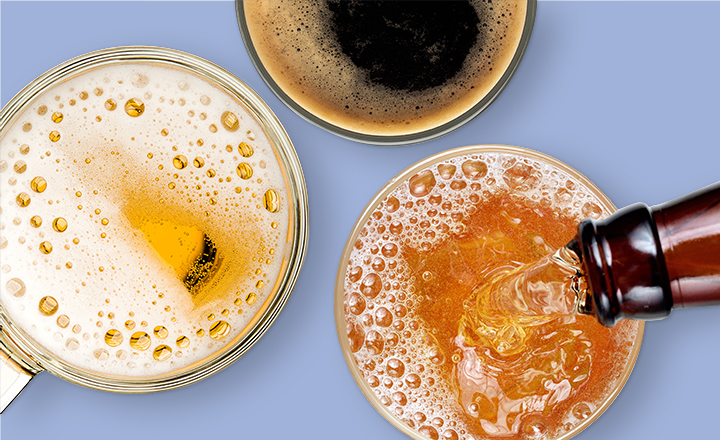Beer spoilage organisms, which include bacteria and wild yeast, can lead to negative changes in the taste, smell and look of beer. Consisting of different microorganisms that could cause off-flavors, odors and other quality complications, these are introduced into the brewing process through multiple sources. This article will explore various avenues where beer is infiltrated by these spoilers starting from aerial contamination to unprocessed material worthlessness as well as sanitation of the brewing equipment.
Key Takeaways
- It follows therefore that strict hygiene measures should be observed to curb airborne contamination microorganisms that deteriorate beverage quality.
- Contamination is kept at bay when one uses high-quality raw materials such as malt, hops or water.
- The key aspect to deal with upfront is ensuring proper sanitation state of brewing equipment against any form of contamination thus keeping up beer quality.
- However there are some human factors like brewers’ personal hygiene habits and practices that may result in increased risks of contamination.
- Temperature and humidity among other factors related to packaging and storage determine how long a beer shall last on the shelves while remaining fit for consumption.

Airborne Contamination
Airborne contamination is one of the main contributors to beer spoilage. Microbes such as wild yeasts and bacteria can settle on brewing equipment, surfaces or even float in the air within a brewery. During brewing, these intruders may easily invade the beer if proper sanitation measures are not well taken care of.
Raw Ingredient Quality
To avoid such contamination starting at its inception, it is important to ensure that raw materials (such as malt and hops) are free of microbes.
Brewing Equipment Sanitation
Spoilage prevention heavily relies on keeping pristine brewery equipment. Tanks, hoses, fermenters and any other tools must be thoroughly cleaned and sanitized. Disregarding this vital step paves way for spoiling microorganisms which then pass on to the beer during brewing process.
Human Factors in Contamination
How clean brewers are affect whether or not beers gets contaminated during making. Good hygiene practices among brewery staff can greatly reduce the chances of introduction unwanted microorganisms into the brewing process such as washing hands regularly, wearing clean clothes and use of personal protective gears.
Likewise, handling procedures in a brewery can pose contamination risks. Brewers must employ due diligence so that they don’t introduce contaminants into their brews but rather focus on correct ways of maintaining equipment after using them; preventing cross-contamination by separating tools from ingredients involved; and ensuring that all surfaces have been disinfected properly.
Contaminant-Free Brewing Environment: The Necessity for Training & Awareness
Training sessions should be conducted regularly to help reinforce these practices while also keeping employees informed about new techniques for avoiding contamination.
Maintaining quality beer requires an understanding of how chemical pollutants develop throughout the brewing process. Biogenic amines, heavy metals, mycotoxins, nitrosamines, phthalates, bisphenols and pesticides are some major chemical pollutants found in beer production industry.
Packaging and Storage
1、Contamination During Packaging
Fermentation is not the end of the road in case of beer production; post-fermentation handling is equally important. Any contact with contaminated surface during packaging and storage may result in spoiled beer. It is important for brewers to implement extensive quality control measures throughout the whole process of brewing.
2、Storage Conditions
Proper conditions for storage are crucial for maintaining the quality of beer. They must ensure that temperature and humidity are controlled so as to prevent growth of spoilage microorganisms. Brewers should make sure that their storage areas are clean from any contaminants.
3、Shelf Life Impact
Lactic acid bacteria (LAB) and other organisms can have some benefits for brewers in the process, but if they remain in beer after packaging, they could cause it to spoil. Taste and safety may affect if there are spoilage microorganisms within a beer causing its shelf life to be significantly lessened.
To avoid spoilage organisms contaminating beer before being packaged is a reliable method that will help maintain quality and extend shelf life.
Environmental Factors
1、Brewery Layout
Risk of contamination in a brewery can significantly be influenced by its design and layout. Properly designed breweries minimize movement of raw material as well as finished products through same sections hence reducing cases of cross-contamination. Segregated zones for different stages of brewing can help in maintaining a clean environment.
2、Temperature and Humidity
Maintaining optimum temperature and humidity levels is essential to prevent spoiling microorganisms from growing into them. High humidity produces condensation which provides good condition for microbes including bacteria, yeast, mold among others. Just like specific temperatures favor certain spoilage organisms temperature control also plays an important role here.
3、Ventilation Systems
Effective ventilation systems play an important role in controlling airborne contamination especially within these plants. These systems assist by removing airborne microorganisms thereby keeping air quality within the brewery at its best level possible. Regular maintenance and monitoring of ventilation systems can prevent build-up of contaminants.
In order to produce a quality beer, it is important to make sure that the environment in the brewery is clean and controlled. A proper layout, temperature and moisture control, together with efficient ventilation systems are some of the most important components for reaching this objective.

Cross-Contamination Risks
It is common for breweries specializing in different beer styles to be plagued by cross-contamination. The use of same equipment without proper cleaning and sanitizing can lead to contamination of next brew with unwanted microorganisms. Brewers must ensure that they keep their equipment separate and clean from each other.
Conclusion
Almost any point along the brewing process can be infiltrated by ubiquitous microorganisms, which implies that the quality and flavor of the final product are in jeopardy. Though pathogenic microorganisms rarely infect beer, it can contain spoilage organisms responsible for off-flavors, smells and visual defects making it undesirable or undrinkable. Brewer’s outstanding management of cleaning/sanitation practices greatly helps reduce these risks thus ensuring production of high-quality beer.
FAQ
- What are the common microorganisms that spoil beer?
Typical examples of bacteria found in spoiled beers include Lactobacilli, Pediococci, Pectinatus, Megasphaera species etc., while wild yeasts like Saccharomyces cerevisiae and Candida pelliculosa are also involved.
- How do airborne microorganisms contaminate beer?
Airborne contaminants may alight on brew-kettles, surfaces as well as float around within brewing spaces. In case severe sanitation is not enforced, these intruders will easily enter through each stage critical during brewing.
- What role does raw ingredient quality play in beer spoilage?
Contaminants present in malted grains such as barley hops as well as water can incorporate spoilage pathogens into fermentation process leading to taste and aroma change for the finished product.
- How important is brewing equipment sanitation in preventing beer spoilage?
Failure to observe effective cleaning protocols and regular sanitation on brewery equipment exposes it to contamination. Some commonly affected items comprise storage tanks hoses fermenters among others.
- Can human factors contribute to beer contamination?
Yes.In order to avoid possibility of contaminating brews during brewing sessions, brewer hygiene handling practices together with proper training and awareness are necessary.
- How do packaging and storage conditions affect beer spoilage?
By failing to adhere to good sanitation, contamination may occur at the stage of packaging. Moreover, storage temperatures plus humidity levels have an impact on the shelf life of this drink as well quality.

